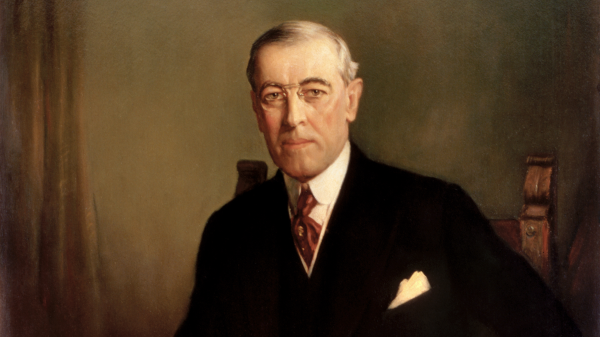Introduction
Twenty years ago, I walked up to the pastor of the church I attended and asked him a simple question: Is this path—the transformation from a worldly-oriented life to that of a man of God—always filled with pain and suffering? He had no answer. The closest I got was a vague shrug: “Each to their own” or “Whatever God has in store for you.” It was an answer, but not the one I was seeking.
Over the past two decades of seeking, studying, and observing the lives of others and my own, I still cannot claim to have a definitive answer. In truth, perhaps no one can. What I can do, however, is summarize my reflections on the journeys of those who have walked this path before me, as well as my own, and attempt to orient our vision toward the ultimate end—the union with Christ.
This essay, then, is not a claim to certainty but a sharing of perspective: an exploration of the human soul striving, failing, collapsing, and finally—sometimes—finding its way to surrender and transformation. It is the continuation of a series of reflections on the “end of oneself,” drawing from scripture, history, and lived experience, with the hope that these observations may illuminate the path for others who seek the same union with God.
1. The Matrix as a Mirror
We have walked through the four quadrants—those who have and those who have not, those who continue seeking and those who come to the end. In this structure, the matrix has served us as a mirror. It reflects not merely categories of people but the dispositions of the heart. The rich young ruler and the kings of old stand in one quadrant; the philosophers and seekers, another; the apostles and ordinary men, a third; and those who hunger yet resist, a fourth.
The mirror is not static. A person does not remain fixed in one place as though cemented to the quadrant of their birth. Instead, we move—sometimes upward, sometimes downward, sometimes to the left, sometimes to the right. The matrix is not only a description of the world but also a description of the soul’s journey.
But what does it mean, in the end, to come to the “bottom right”—the quadrant of the have-nots who have come to the end? What does it mean to surrender? And more importantly: is this end truly the end, or is it, in fact, the beginning?
2. The Collapse of Illusions
Every quadrant is haunted by an illusion. For the “haves” who are still seeking, the illusion is that wealth, ambition, or knowledge can satisfy the longings of the soul. Solomon tried this path, only to write, “Vanity of vanities, all is vanity” (Ecclesiastes 1:2)[1]. His conclusion was not born of poverty or deprivation but of saturation: he had tasted it all and found it wanting.
For the “have-nots” who are still seeking, the illusion is that if only they could cross the threshold into prosperity, then fulfillment would arrive. But this is the “grass-is-greener” deception. How many lives have been squandered in envy, in restless striving, in imagining that the key lies always on the other side? Jesus addressed this hunger directly when He fed the five thousand. Many came not to hear His teaching but to receive bread. And when He offered Himself as the Bread of Life, they recoiled (John 6:26–66)[2]. Their illusion was that the satisfaction of the stomach would satisfy the soul.
Even those who have “come to the end” face subtler illusions. The powerful who have been broken may imagine that their humiliation is itself the goal, when in fact it is a doorway to humility before God. The destitute who endure hardship may assume their suffering is sufficient in itself, when in reality suffering is only fruitful when surrendered to God. Thus, the collapse of illusion is not the collapse of meaning but its unveiling.
3. Transformation at the End of Oneself
To come to the end of oneself is to face an unavoidable truth: “I cannot save myself.” Whether rich or poor, whether learned or simple, whether honored or despised—each must arrive at that confession. The apostle Paul declared, “When I am weak, then I am strong” (2 Corinthians 12:10)[3]. Strength did not come from further striving but from surrender.
Notice how the apostles exemplify this posture. Fishermen left their nets. A tax collector left his counting table. They had no vast kingdoms to relinquish, no libraries of philosophy to dismantle. Yet they surrendered what they did have—the security of livelihood, the patterns of ordinary life, and the self-will of charting their own course. Jesus’ call was simple: “Come, follow Me” (Matthew 4:19)[4]. And they did, unequivocally.
Their transformation was not through acquisition but through relinquishment. In leaving everything behind, they entered into a fullness that could not be earned: fellowship with Christ, participation in His mission, and the outpouring of the Spirit. This demonstrates that the end of oneself is not defined by the scale of one’s possessions but by the readiness of one’s heart to abandon them when called.
4. Movement Between Quadrants
How does one move through the matrix? What pulls a person from “seeking” to “surrender”? The answer is both sobering and hopeful: it is often pain, loss, or a divine encounter that shifts the axis of the soul.
-
From Haves + Seeking to Haves + End: Nebuchadnezzar’s humiliation is the paradigm. Pride was broken through madness, until he could say, “Now I…praise and honor the King of heaven” (Daniel 4:37)[5].
-
From Have-nots + Seeking to Have-nots + End: The apostles illustrate this movement. They had little, but their response to Christ’s call marked the turning point. No crown was lost, no empire surrendered, but self-rule was abandoned.
-
From Any Quadrant to Coming to an end: There is also a way to transcend the grid entirely, for the goal is not to occupy a quadrant but to be remade in Christ. The matrix is descriptive, not prescriptive. What matters is that, by grace, one moves toward surrender, wherever one begins.
Thus, movement across quadrants is never mechanistic. It is always relational. It is not the collapse of possessions or ambitions alone but the encounter with the living God that reorients the heart. Without God, collapse breeds despair. With God, collapse becomes the seedbed of new life.
5. The Paradox of Gain Through Loss
At the heart of the Christian message lies paradox: “Whoever loses his life for My sake will find it” (Matthew 16:25)[6]. This paradox unsettles every quadrant. The “haves” must learn that their abundance is not their security. The “have-nots” must learn that their deprivation is not their identity. In Christ, the distinctions blur, for all stand equally in need of grace.
Consider Paul again: he had status, education, and zeal as a Pharisee. Yet he wrote, “Whatever gain I had, I counted as loss for the sake of Christ” (Philippians 3:7)[7]. Paul lived in both quadrants—once a “have” seeking, later a “have-not” surrendered. And in the latter, he discovered joy surpassing anything the former could provide.
This paradox unmasks the world’s false arithmetic. Gain is not gain. Loss is not loss. The only true gain is Christ Himself, and the only true loss is to live apart from Him.
6. The Universal Question
So we return to the mirror: where am I in the matrix? Am I a “have,” still seeking? A “have-not,” longing for what I do not possess? Have I faced collapse and yet resisted God’s invitation? Or have I, like the apostles, responded to the simple call: “Come, follow Me”?
And even if I answer today, does that guarantee my tomorrow? Might I not, like Solomon, drift back into vanity? Might I not, like the crowds, hunger for bread and miss the Bread of Life? The matrix is a sober reminder that no quadrant is guaranteed.
Yet the question is not meant to paralyze but to provoke. For in asking, we open ourselves to grace. And grace is always sufficient (2 Corinthians 12:9)[8].
Conclusion: The End as the Beginning
To come to the end of oneself is not annihilation but invitation. It is the death of illusions, the collapse of self-reliance, and the unveiling of God’s sufficiency. It is not an end for one but a new beginning in Him who is the Alpha and the Omega.
Each quadrant teaches us something. The “haves” remind us that wealth without God is vanity. The “have-nots” remind us that deprivation without Christ is despair. But the apostles remind us of the simplicity of the call: when He speaks, follow.
And so we close this reflection with humility. This is one reading, one interpretation, one way of looking through the mirror of the matrix. Others may see differently; others may emphasize other lives, other lessons. Each person is free to choose, free to seek, free to surrender—or not. But the testimony of Scripture and history is clear: those who come to the end of themselves find not an abyss but a door. And on the other side of that door stands Christ Himself.




